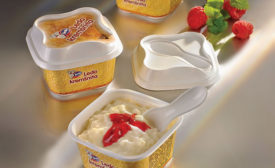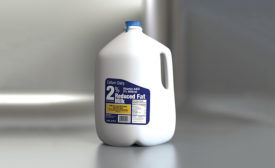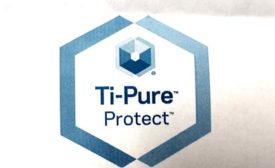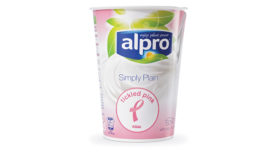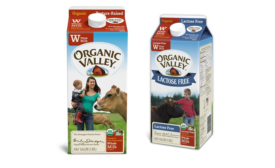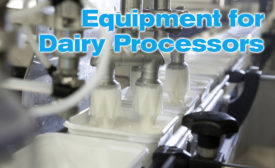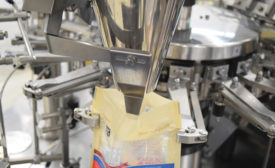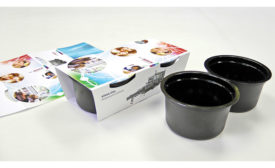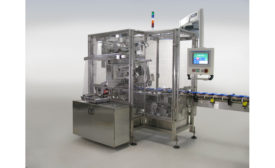Packaging Technologies-Dairy Processors
Two other factors garnering attention from brand marketers are convenience and sustainability. Here’s a look at innovative packaging, including aseptic containers and in-mold labels.
Read More
4 questions to help improve labels, labeling performance
From sustainability demands and trends, to challenging processing environments, the choices manufacturers make with their labels can have a significant impact. Labeling suppliers discuss these topics and more.
May 15, 2017
Chemours the merrier
‘SPF’ for milk packages certifies that nutrients are protected
A logo signifies that the packaging has been audited for its ability to screen light.
April 5, 2017
Please sleeve
Sleeve packaging is the right solution for a Finnish yogurt maker
Juustoportti can output 200 4-packs products a minute thanks to a robotic solution by equipment maker Gerhard Schubert.
March 20, 2017
Dairy snacks need their own packaging
Milk, cheese, yogurt and cottage cheese are healthy alternatives to fried or baked snacks and candies. So these dairy snacks need to be packaged in single-serve or snack-size formats.
March 13, 2017
Package design
How great package design helps milk get noticed
Milk cartons by Organic Valley, Arla and Bifrutas offer some guidance.
March 1, 2017
The versatility of flexible packaging for dairy products
There is more flexible packaging in the dairy case these days as manufacturers turn to versatile plastic pouches.
February 15, 2017
What to look for when choosing secondary packaging equipment
We highlight the benefits of certain secondary packaging machines and what they can do for manufacturers of dairy foods and beverages.
January 11, 2017
Packaging machinery
PDC International launches shrink banders for ‘sqround’ tubs
January 5, 2017
Stay ahead of the curve. Unlock a dose of cutting-edge insights.
Receive our premium content directly to your inbox.
SIGN-UP TODAYCopyright ©2024. All Rights Reserved BNP Media.
Design, CMS, Hosting & Web Development :: ePublishing
